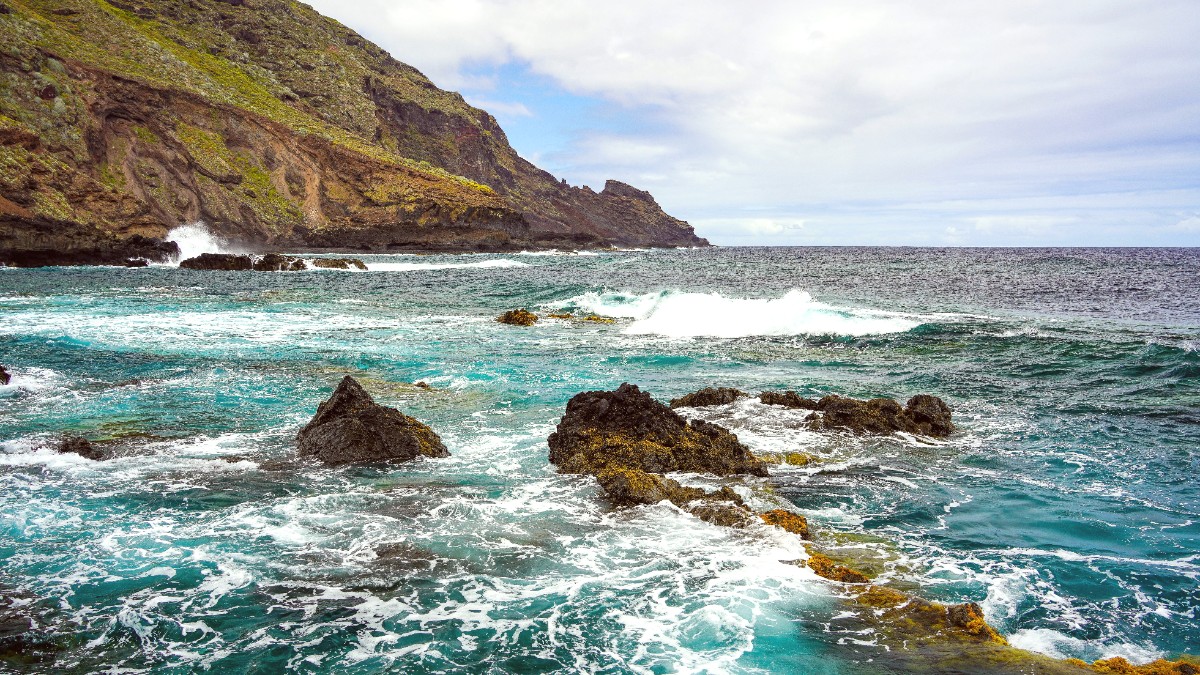
La Palma, Canary Islands
Canarian cuisine blends Spanish, Latin American (historical ties), and African influences.
It adapts to the island's produce, with fresh, local ingredients, notably fish, potatoes, and gofio.
"Papas arrugadas" (wrinkled potatoes) are served with red 'mojo picón' (paprika/chili) and green 'mojo verde' (coriander/parsley) sauces.
Fresh fish (cherne, vieja, sama) and 'gofio' (toasted grain flour) feature prominently in various dishes.
Goat cheese (Queso de Cabra), small sweet Canarian bananas, and almonds appear in many preparations and desserts.
Small, boiled unpeeled potatoes with salty, wrinkled skin. Served with red and green mojo sauces.
Found everywhere in traditional restaurants.
Salted fish (often cherne) stew with potatoes, sweet potatoes, gofio, and mojo.
More common on weekends or specific days.
Local goat cheese, often served grilled (queso asado) with mojo or honey.
Available in most restaurants and cheese shops.
Bienmesabe is a sweet almond cream, often with ice cream. Dulces de Almendras are almond-based cookies or pastries.
Príncipe Alberto is a layered chocolate and almond dessert. Canarian bananas are small, sweet, and often served as a simple dessert.
A few higher-end restaurants feature modern Canarian cuisine or international fusion.
Numerous choices offering traditional Canarian food, fresh seafood, and international options.
Small bars with tapas, local cafes, and bakeries. Markets also sell prepared foods.
Santa Cruz de La Palma's daily market (except Sundays) offers fresh produce, meat, fish, cheese, and local specialties.
Good for ingredients, not a food hall for prepared meals.
Available in Santa Cruz and Los Cancajos, including Italian, Chinese, and other European fare.
Options cater to varied tastes.
Increasingly available in larger towns. Salads and adapted dishes may feature.
Awareness grows. Inform staff of allergies (e.g., "sin gluten").
Dedicated options are limited or non-existent.
Utilize online searches and communicate directly with restaurants.
Visit local vineyards. Many offer tours and tastings of their unique wines.
Explore "Denominación de Origen La Palma" estates.
Visit local cheese producers or banana plantations.
Some feature tours and product sampling.
Various local gastronomic fairs take place throughout the year, celebrating specific products like cheese, wine, or almonds.
Mercado Municipal provides fresh ingredients.
Some rural tourism providers offer workshops on traditional crafts, like baking almond sweets.
Workshops may cover traditional crafts like basket weaving or pottery, often upon request.
Spanish language schools exist, though La Palma is less common for language tourism than larger islands.
Occasional performances of traditional Canarian music (e.g., Timple) and dances occur at local fiestas.
Check local event calendars.
Famous for "Día de los Indianos" in Santa Cruz de La Palma. A celebration with white clothing, talcum powder, and Cuban music.
A unique and cultural event.
Traditional celebrations honoring patron saints, often with processions and local music.
Celebrate local agricultural products like wine or almonds. Opportunities for tastings.
Throughout the year, various events provide insights into local traditions and artistry.
Embrace local flavors.